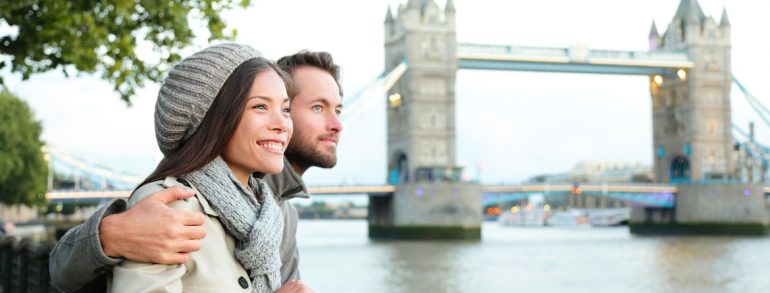London
The biggest shopping center in Europe
Noisy, vibrant and truly multicultural, London is a megalopolis of people, ideas and energy.
The capital and largest city of both the United Kingdom and of England, it is also the largest city in Western Europe and the European Union. Situated on the River Thames in South-East England, Greater London has an official population of nearly 8 million people — although the figure of over 14 million for the city’s total metropolitan area more accurately reflects London’s size and importance. London is one of the great «world cities,» and remains a global capital of culture, fashion, finance, politics and trade.
City Characteristics
|
Landmarks |
Buckingham Palace. The official London residence of the Queen, also in Westminster, a must-see sight even if you don’t go in. The London Eye. The world’s third largest observation wheel with magnificent views over London. Marble Arch is a white Carrara marble monument designed by John Nash Piccadilly Circus is one of the most photographed sights in London. The status of Eros stands proudly in the middle while the north eastern side is dominated by a huge, iconic neon hoarding. St Paul’s Cathedral Tower Bridge. Is the iconic 19th century bridge located by the Tower of London near the City. It is decorated with high towers and featuring a drawbridge and you can visit the engine rooms and a Tower Bridge exhibition. The Tower of London. Situated just south east of the City, is London’s original royal fortress by the Thames. Trafalgar Square. Overlooked by the National Gallery, it’s the nearest London has to a ‘centre’, and has recently been pedestrianised. Westminster Abbey and the Palace of Westminster (including Big Ben and the Houses of Parliament) in Westminster. 30 St Mary Axe or The Gherkin, a peculiarly-shaped 180m building in the City, which provides a 360° view of London on the 40th floor. |
|
Museums and Galleries |
London hosts an outstanding collection of world-class museums, the majority of which have no entrance charges, thus allowing visitors to make multiple visits with ease. Although London can be expensive, many of the best museums and galleries are free including: British Museum and most museums in Greenwich. Note that admission to many temporary exhibitions is not free. Aside from these world famous establishments, there is an almost unbelievable number of minor museums in London covering a very diverse range of subjects. The British government lists over 240 genuine museums in the city. |
|
Parks |
The ‘green lungs’ of London are the many parks, great and small, scattered throughout the city including Hyde Park, St James Park and Regent’s Park. Most of the larger parks have their origins in royal estates and hunting grounds and are still owned by the Crown, despite their public access. |
|
What to do |
Take a walk through London’s Royal Parks. A good walk would start at Paddington station, and head through Kensington Gardens, Hyde Park, Green Park (passing Buckingham Palace) and St James Park before crossing Trafalgar Square and the River Thames to the South Bank and Waterloo Station. At a strolling pace this walk would take half a day, with plenty of places to stop, sit, drink, eat en-route. Live Music. London is one of the best cities in the world for concerts, spanning from new musical trends to well-known bands. Theatre. The West End, especially the areas concentrated around Leicester Square, Covent Garden, Shaftesbury Avenue and Haymarket, is one of the world’s premier destinations for theatre, including musical theatre. Watch a movie. As well as the world-famous blockbuster cinemas in the West End, London has a large number of superb art house cinemas. In the summer months, there are often outdoor screenings at various venues, such as Somerset House and in some of the large parks. Watch football. Take in a home match of one of the city’s 15+ professional football clubs for a true experience of a lifetime as you see the passion of the «World’s Game» in its mother country. Wimbledon. Wimbledon is the oldest tennis tournament in the world and is widely considered the most prestigious. Naturally it is a regular feature on the Tennis calendar. London goes «tennis crazy» for two weeks when the competition commences in late June and early July. Open House London Weekend. Explore many of the city’s most interesting buildings during the London Open House Weekend — usually held on the third weekend of September. During this single weekend, several hundred buildings which are not normally open to the public are opened up. Natural History Museum. One of the first of its kind in the world. The museum houses many permanent and temporary exhibitions covering plants, animals and geology from the worlds natural history. Of interest to most would be the permanent dinosaur exhibition. Winter Skating. London has a number of outdoor ice rinks that open in the winter months. Summer Skating. In summer (and also in winter, for the more dedicated) there is also a thriving roller skating (on inline and traditional «quad» skates) scene in London, catering to many disciplines including street hockey, freestyle slalom, dance, general recreational skating (including three weekly marshalled group street skates) and speed skating. This mostly centres around Hyde Park (on the Serpentine Road) and Kensington Gardens (by the Albert Memorial). Shopping. Oxford Street, Regent Street and Bond Street, all in the West End, are some of the most famous shopping destinations in the world, but they are also just the tip of the iceberg, and many London districts and town centres have unique shopping attractions of their own. Cycle Tours. Guided tours of London’s famous landmarks atop a classic 1920’s style handmade British bicycle. Stops include Big Ben, The Houses of Parliament, Buckingham Palace, Trafalgar Square and Covent Garden, meandering through backstreet’s and cycle paths. An extended tour to Hyde Park and Kensington Gardens for those who are wanting a longer tour. Bicycle hire and private tours are also available. |




